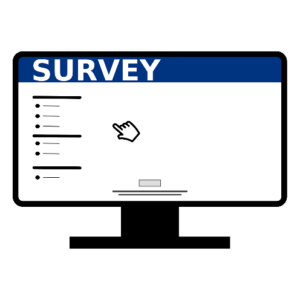By Angelos Bollas


In the teaching days prior to receiving professional training, not only did I not ask my students for their feedback in regards to my teaching but also did not even think that it could make my lessons better in any way. Thinking back, I can also confess that this did not happen consciously. In other words, I was not uninterested in what they had to say about our lessons; I just didn’t know any better. I am sure there are many teachers out there who are so overwhelmed by the things they have to do in a lesson that they ‘forget’ to ask whether the learners actually learn, enjoy, or want something different from the lesson and/or the teacher.
In this post, I would like to share my experience of making students’ reflection an integral part of the lessons I taught last year at a pre-sessional course offered by a UK institution of higher education to international students who applied for Masters or Doctorate studies. The course, lasting 10 weeks over the summer, focused on the development and honing of students’ academic skills so that they would be able to cope with the demands of their postgraduate course after completing it.
It was their cultural and educational background that made me realize in the beginning of the course that there was a real need for me to see whether my teaching had any effect. By that time, I had experience teaching students from all over Europe and North America but I had never taught students from China, Japan, and Saudi Arabia. Thanks to my previous training, I was aware of the relevant literature that described learners’ academic strengths and weaknesses (in relation to learning English, that is) and I did consult different sources, but I was still not sure that this would be enough. So, the first thing that I introduced was an online learning diary.
Online Learning Diary

I set up a wiki space using PBworks (click here for more information) and had the students create their own private pages. Every Friday they were asked to provide short answers for the following questions:
- Overall, have you enjoyed this week’s classes? Why? Why not?
- Were there any activities/tasks that you enjoyed a lot? Why did you like them?
- Were there any activities/tasks that you did not enjoy at all? How could they be different?
- If you could change three things about our lessons, which ones would they be and how would you change them to make them better?
I really enjoyed reading the students’ responses not only because I could make adjustments to the following week’s planning but also because they were unconsciously practicing their writing skills. However, given the pace of the course, after the first couple of weeks students started seeing this as an extra assignment for which they had no time and, since it was not part of their formal assessment, they were not very keen on completing it. Once I realized that this didn’t work anymore, I thought of using questionnaires at the end of each teaching day; this way, students would not have to do anything other than tick the boxes.
Questionnaires

The questionnaires were very simple in design. Most questions asked the students to choose a yes/no answer and were all followed by a short-answer question. A sample question would look like this:
Did you enjoy today’s class?
Yes No (circle the one that applies)
Why? (answer in a short sentence) _____________________________________________________________
Indeed, students were happier completing such a questionnaire each day rather than having to log into our wiki space, find their page, think of all the tasks/activities we had done each week, and start typing paragraph-long answers. When it comes to the quality of the feedback I received, though, it was significantly lower than the one I received through the online learning diary. Not surprisingly, after 6 hours of lessons, students wanted to complete the questionnaire as soon as possible so that they could leave the lecture hall and go home. It was also a less environmentally friendly solution, so I had to think of something else.
In trying to find a more effective way of collecting feedback, I remembered what I usually say to teachers when they ask me about best tech tools: use the one your learners are most familiar with. The majority of my students were using WeChat, a free messaging app similar to WhatsApp, so I put it to use for getting their feedback.
WeChat for feedback

We set up a class group on WeChat and students were asked to add a short comment after the end of each session (not after the end of each teaching day). This time, there were no pre-assigned questions or any guidelines and the responses I received were similar to these:
“Very difficult text”
“Difficult words”
“Nice game”
“Let’s do this again”
“Can we not read another text about engineering?”
“I like doing exercises in groups”
The most interesting thing about this method of collecting feedback was that I was receiving it after the end of each session, which meant that I could make on the spot changes for the remaining sessions of the day.
In my opinion, all three ways of collecting feedback are very helpful; one needs to find the right one for their own teaching/learning context. For my context, the one that worked the best was using WeChat. It allowed my students to use a platform they were familiar with and were already using anyway, which meant that they did not ‘forget’ to send their feedback. Due to the limited length of their comments, it did not look like extra homework for them and allowed them to be concise.
There are certainly other means for gathering feedback that have not been mentioned in my post, such as Google Forms, Tutorials, and many others. It would be really useful for me and all readers of this blog if you added your thoughts and/or preferred methods for collecting feedback from your students in the comments area below!


Hi Angelos,
I love all these ideas, especially the WeChat one. I also worked on a pre-sessional last year so know how hard it is to get Ss to make extra time for feedback/reflection. One thing I tried was video diaries. These weren’t focused specifically on giving feedback, but for student reflections on their oral presentations. After giving their presentations Ss would send me a short video (2-3 mins) reflecting on thier performance in their presentation. I’d also respond with a video, giving my comments and any corrections. I think this could also work for feedback but probably not on a daily basis. It also gives Ss extra speaking practice and personal feedback.
Thanks again for the ideas.
Gemma.
Hi Gemma,
Thank you for your comment – Indeed, video feedback is fantastic and works really well with students. Especially when you give them feedback on their assignments. I usually use screencasts to send feedback on all assignments, even the written ones. It saves time for me and makes sense for them.
I am sure it would work perfectly for getting feedback from students re the lesson/materials/etc. This could be used later in class for peer/self-correction and speaking lessons.
Once again, thank you for your ideas! 🙂
Best,
Angelos
Thanks for sharing your ideas!
I have introduced this practice as part of my everyday teaching since I consider it essential for the success of one’s lessons. I have used many different tools such as plain pen and pencil, asking orally, doing a show of hands, etc. There are excellent tools on line such as http://www.sli.do which let’s you poll your sts live!
Hope you keep on posting such interesting practices!
Best,
Fabiana
Hi Fabiana,
Thank you for your comment and the link. Polls are a great classroom tool, indeed, with many applications.
Thanks for the ideas and kind words 🙂
Best,
Angelos